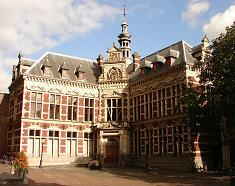Speaker
Tomas Aronsson
(Yale University (US))
Description
Tomas Aronsson for the ALICE collaboration
High-energy heavy-ion collisions at the LHC allow for the study of the properties of the quark-gluon plasma (QGP). Heavy quarks, charm and bottom, produced in the initial hard scattering processes of the collision are excellent probes of the QGP. When heavy quarks traverse the QGP they are expected to lose energy and such energy loss is predicted to be smaller than for gluons and light quarks. Heavy-flavour production can be studied using electrons from semi-leptonic decays of D and B mesons. The separation of electrons from these two sources (charm and bottom) is of crucial importance to address the expected mass dependence of energy loss. In this talk, we present the measurement of electrons from bottom decay in the transverse momentum range of 1-11 GeV/c in 7 TeV pp collisions at the LHC. Two methods are used to identify electrons from bottom decay; a track impact-parameter study based on the displacement of the decay vertex from the collision vertex, and a two-track secondary vertex b-tagging algorithm used to select displaced decay vertices. The cross section for bottom decay electrons is compared to FONLL pQCD predictions and it will serve as a reference for studies of B meson suppression in Pb-Pb collisions.
Summary
Bottom electron production in 7 Tev pp collisions at ALICE, Tomas Aronsson for the ALICE collaboration
Author
Tomas Aronsson
(Yale University (US))
